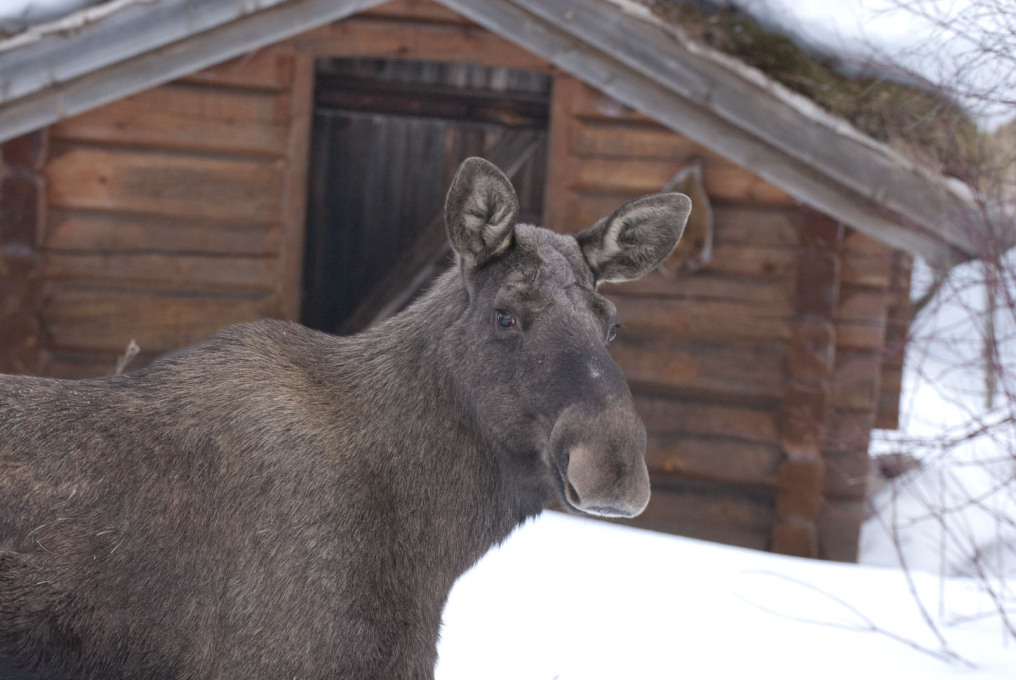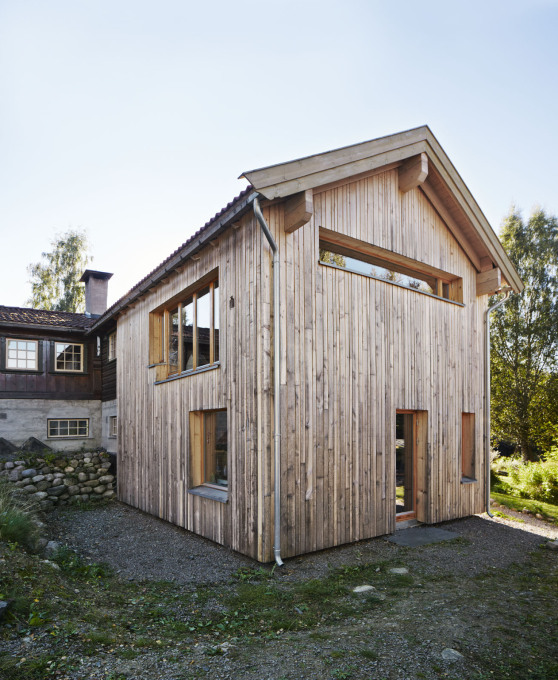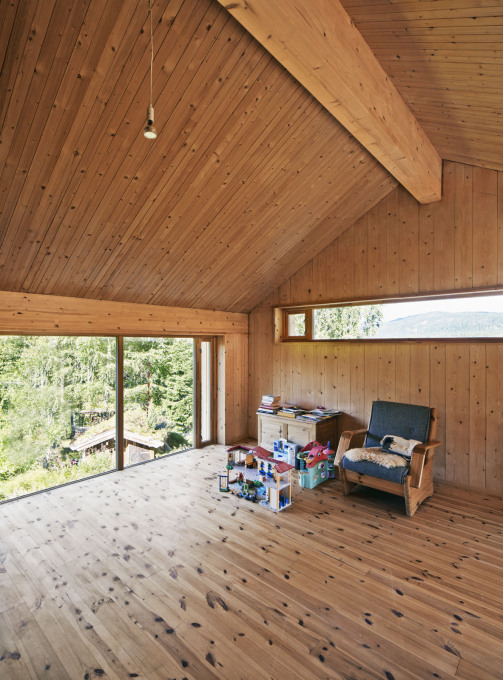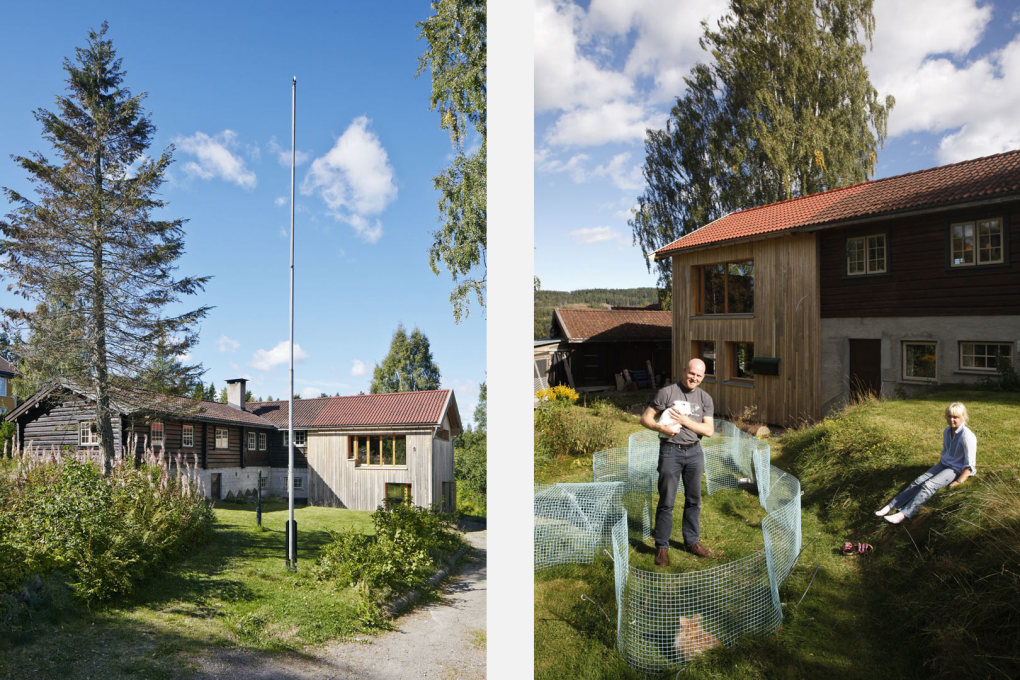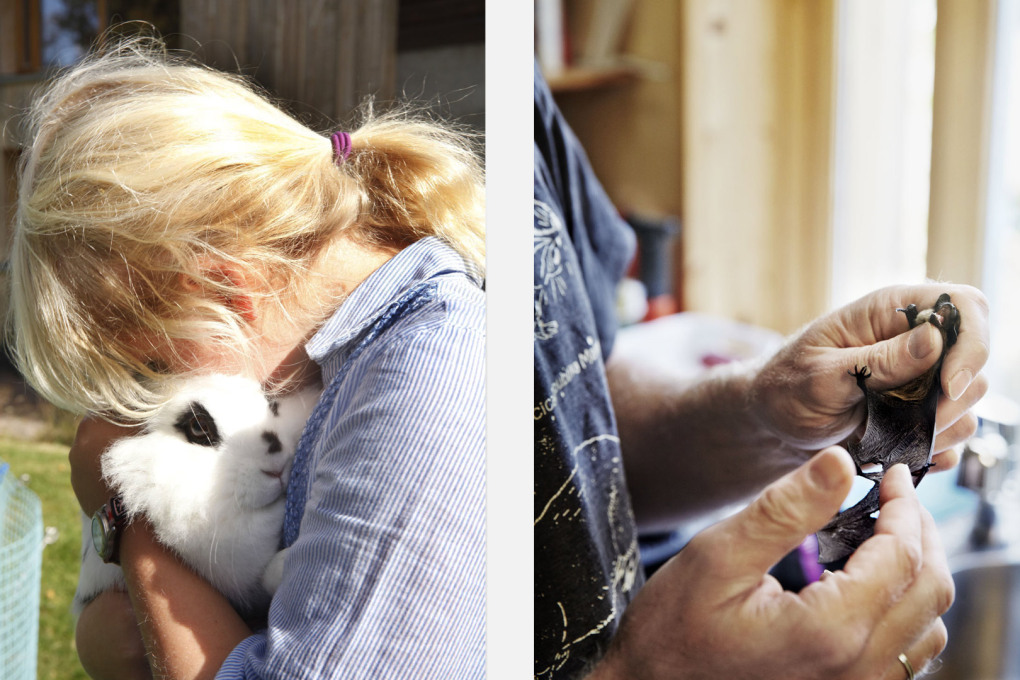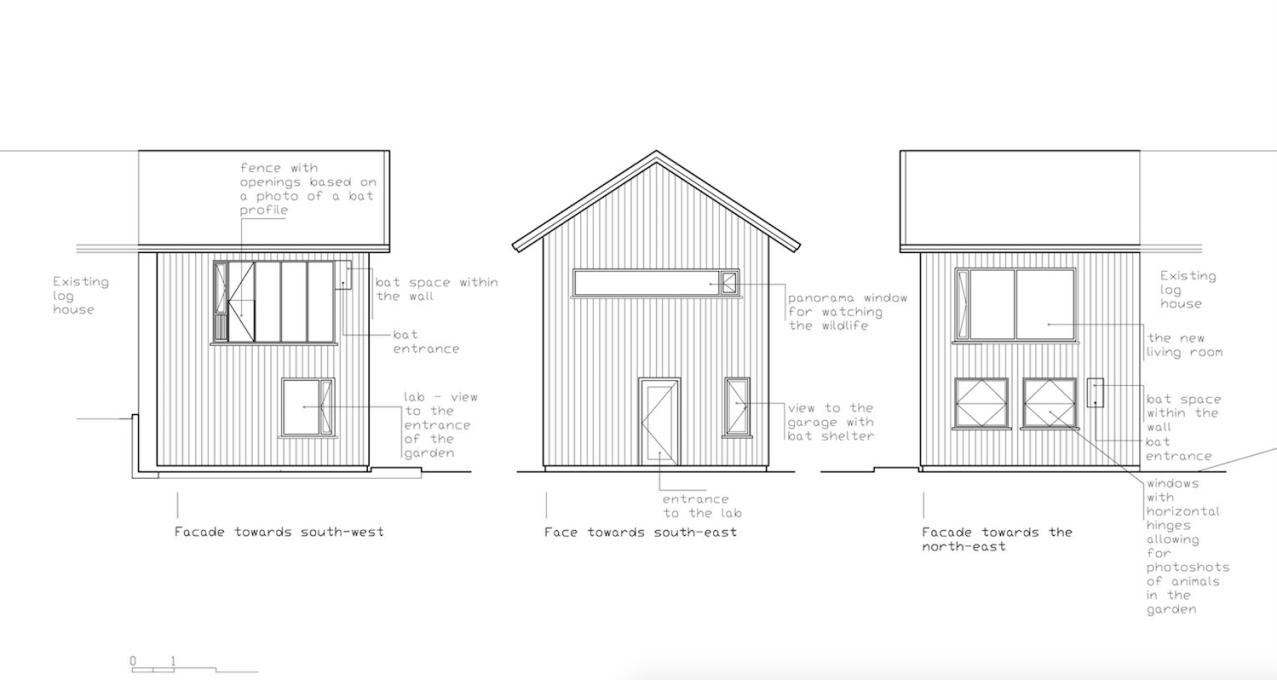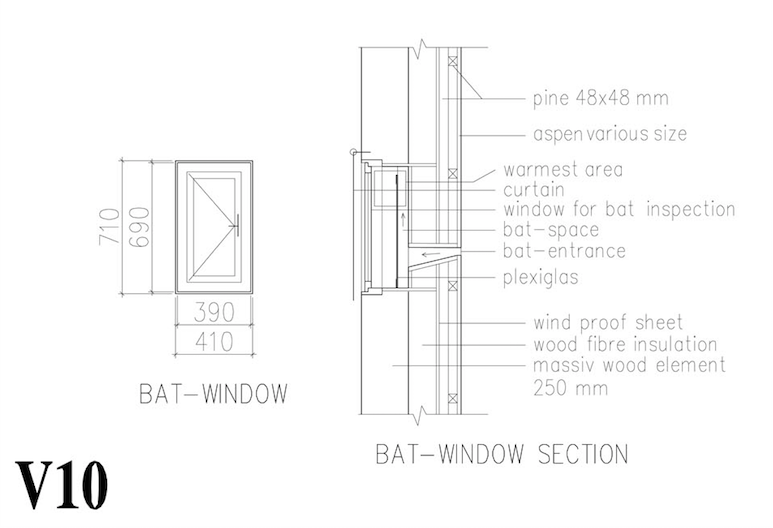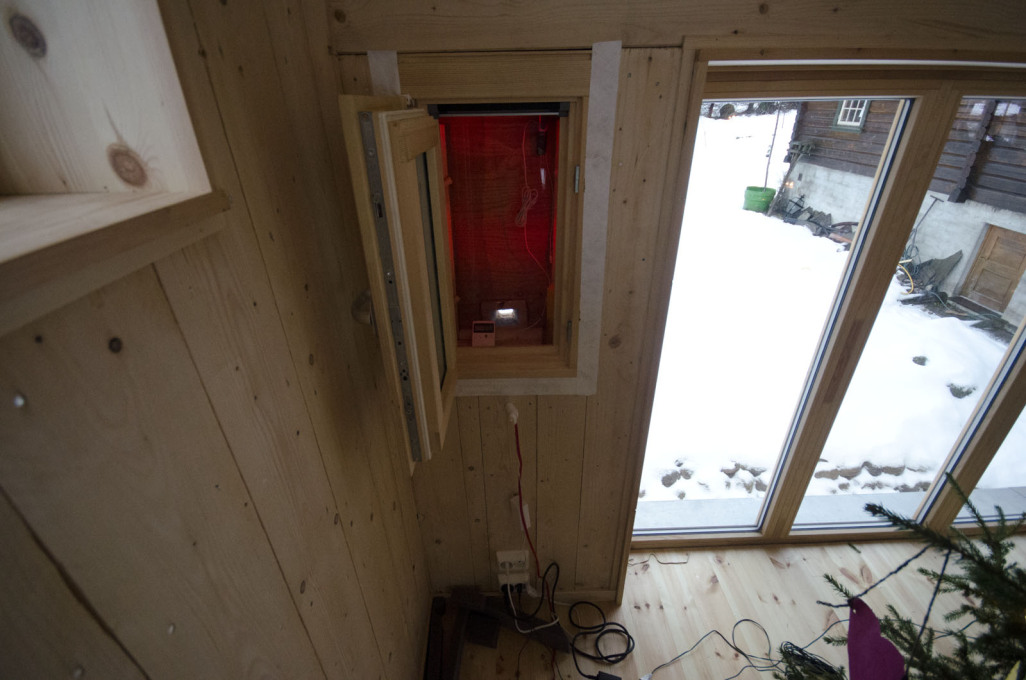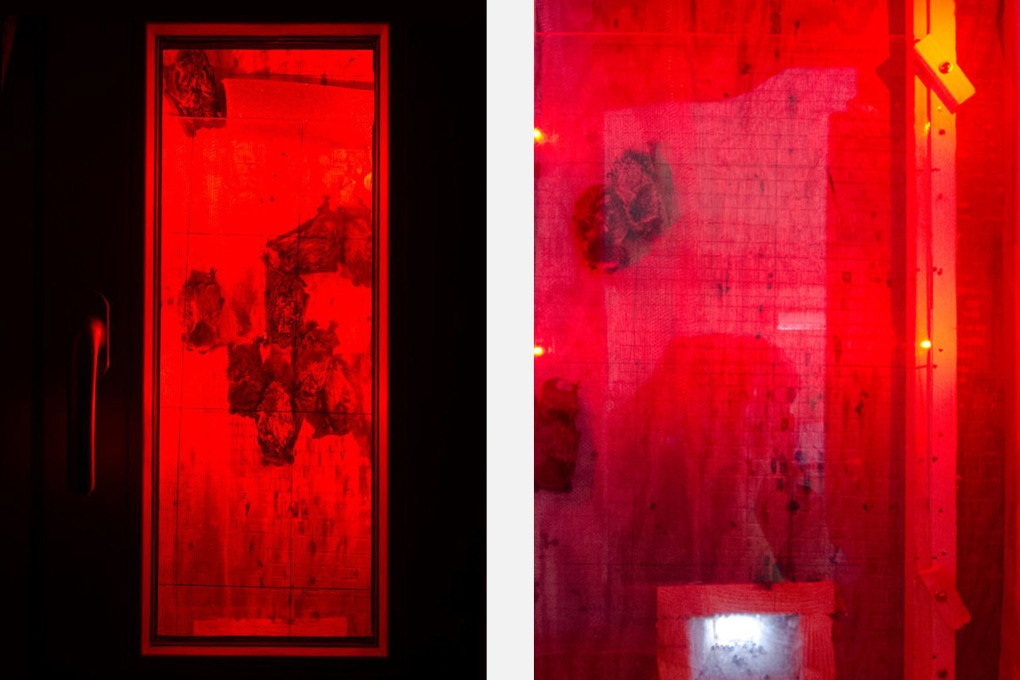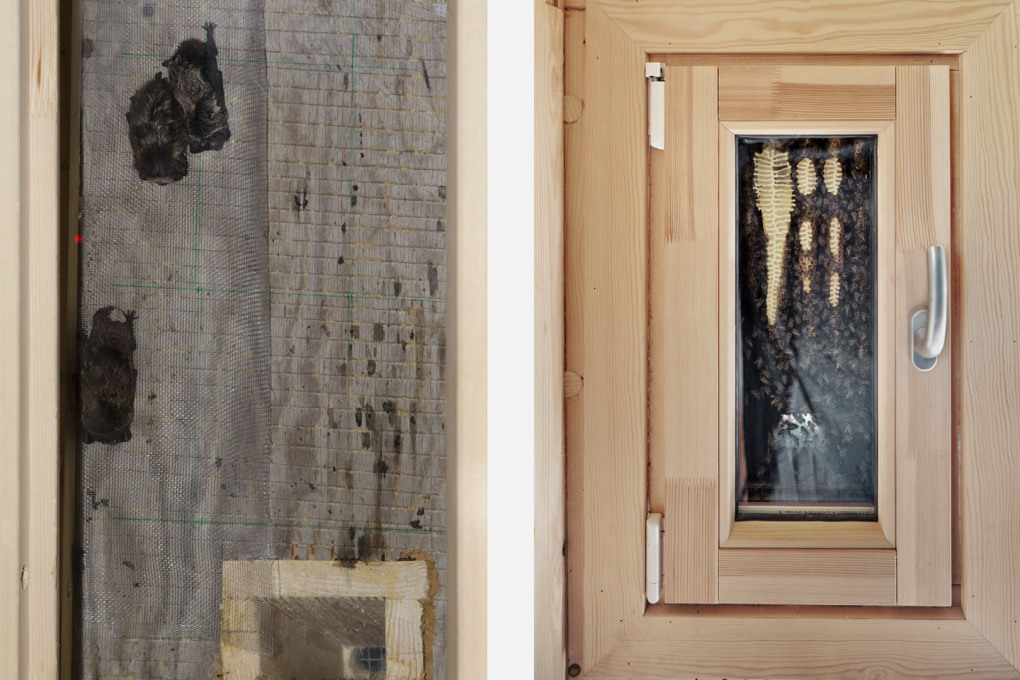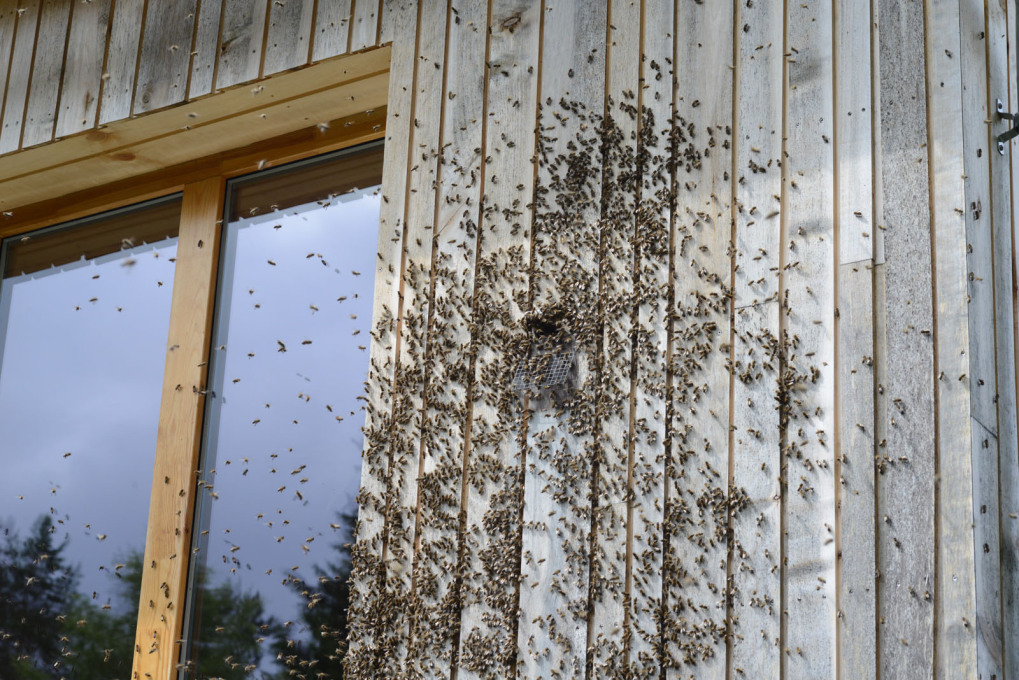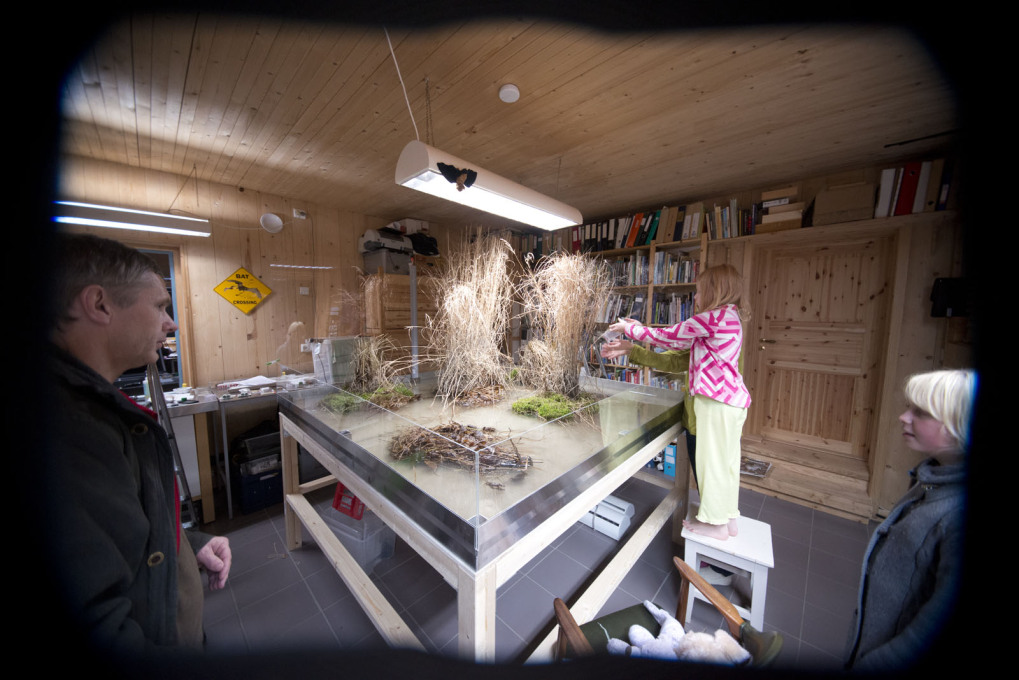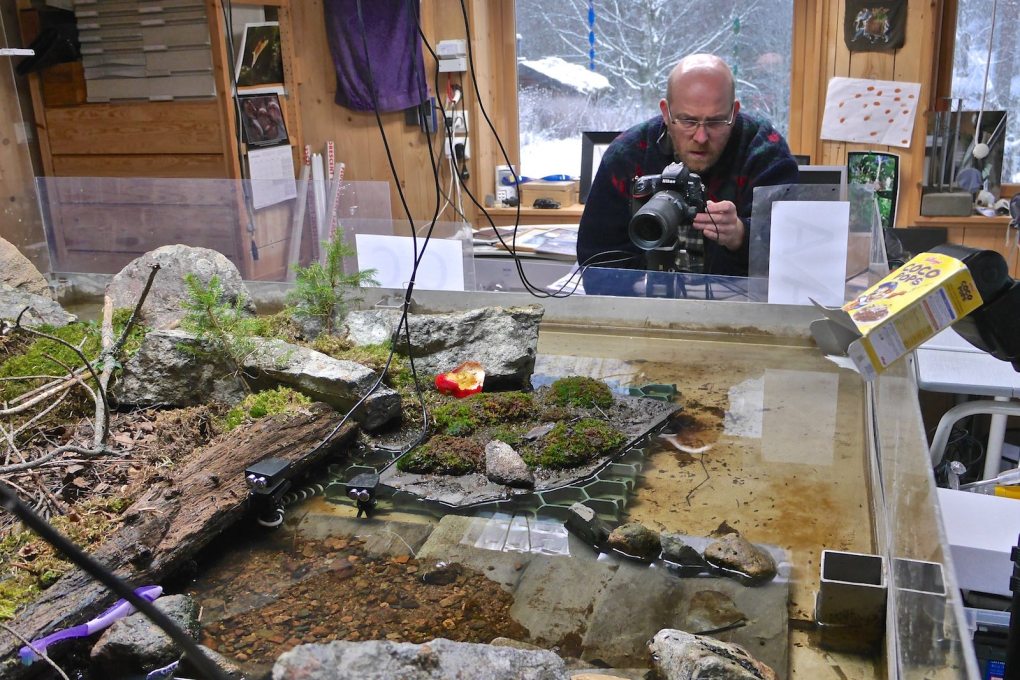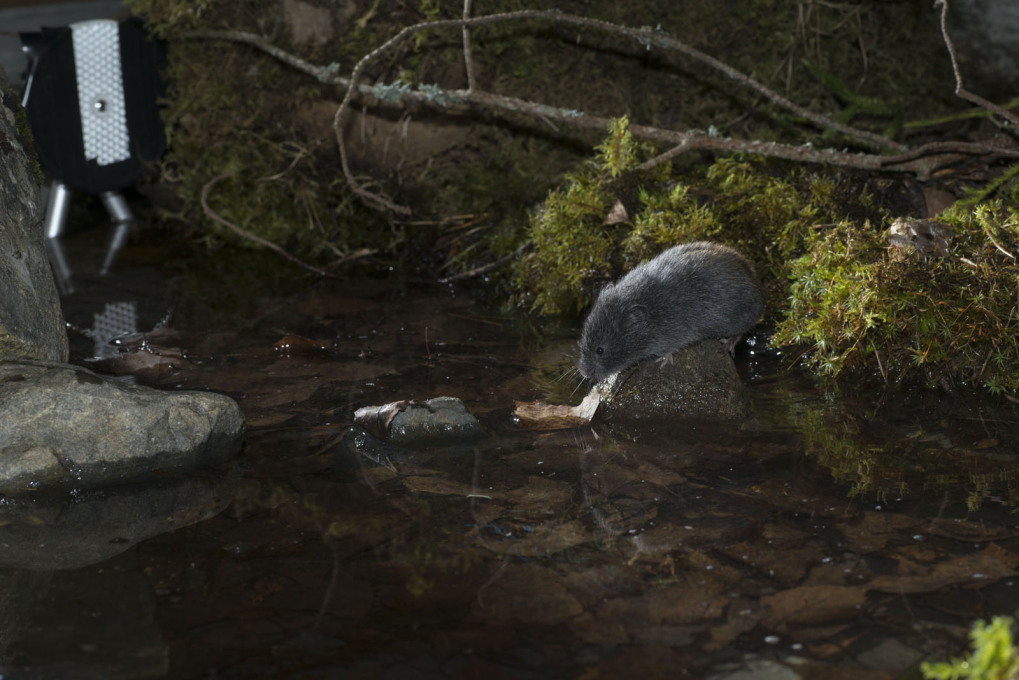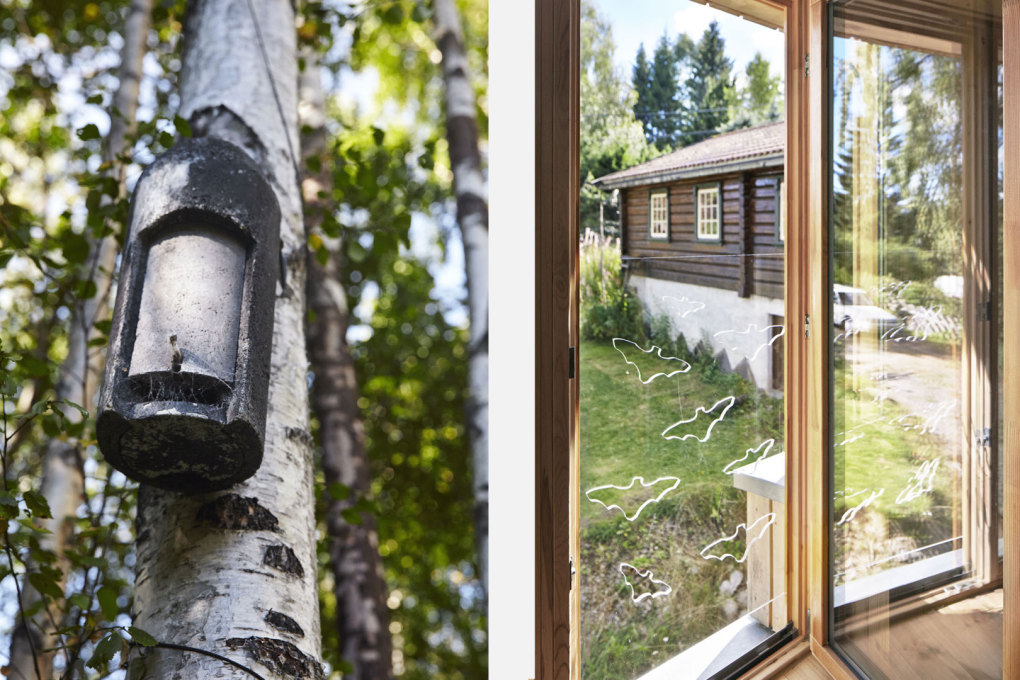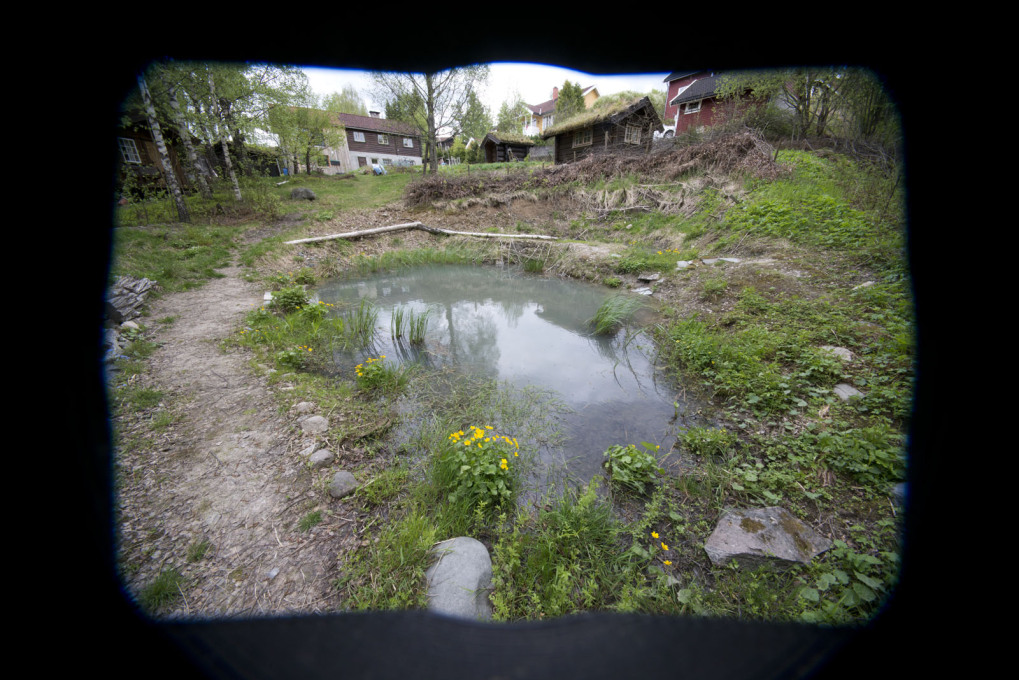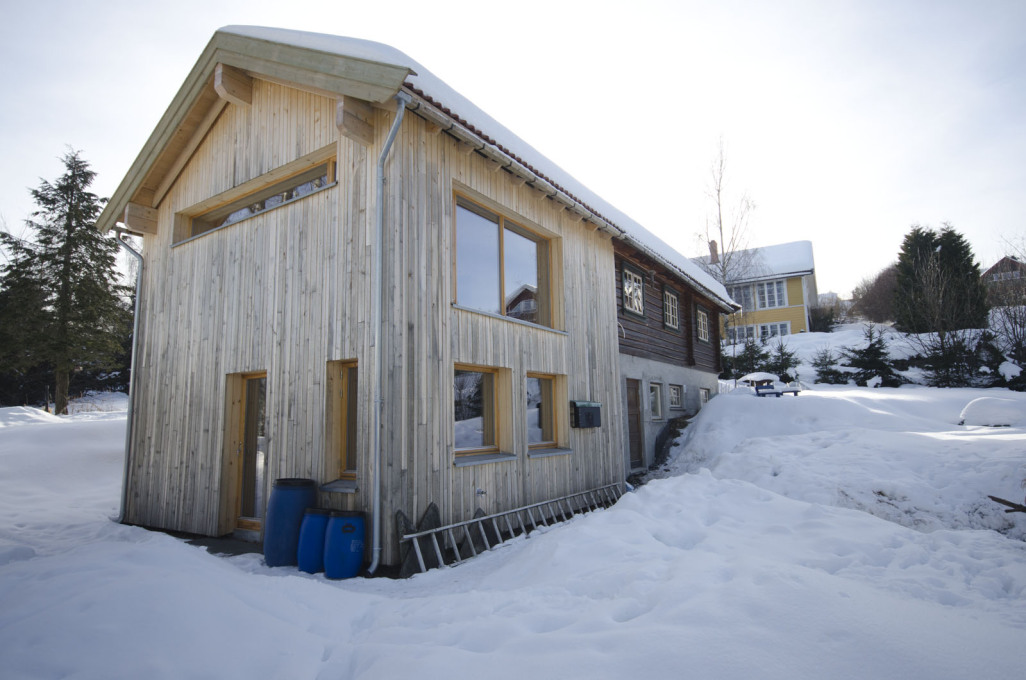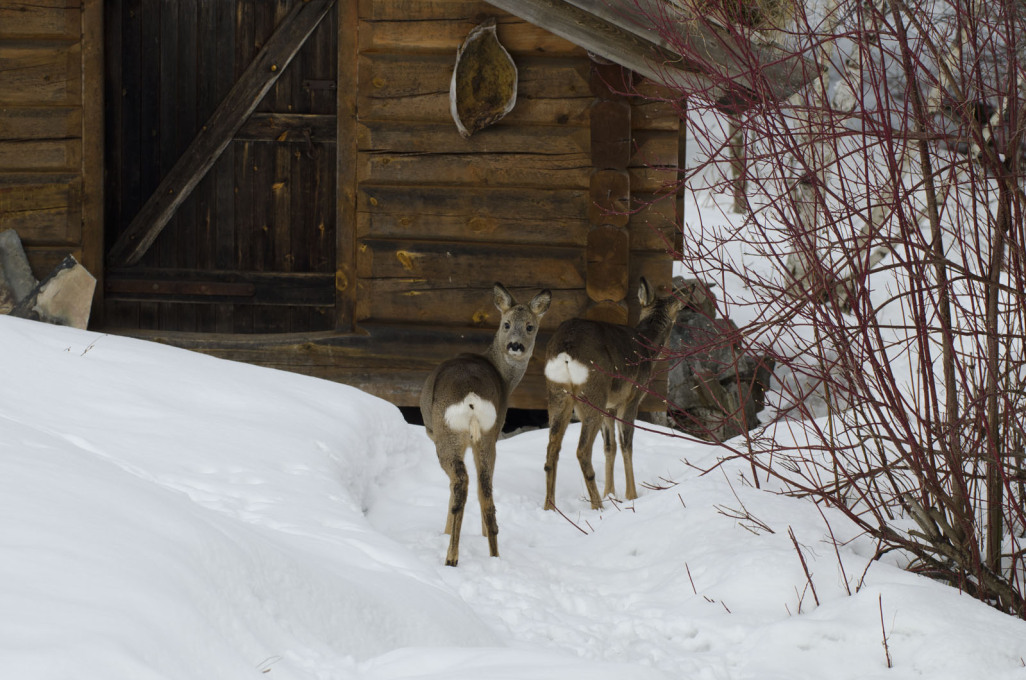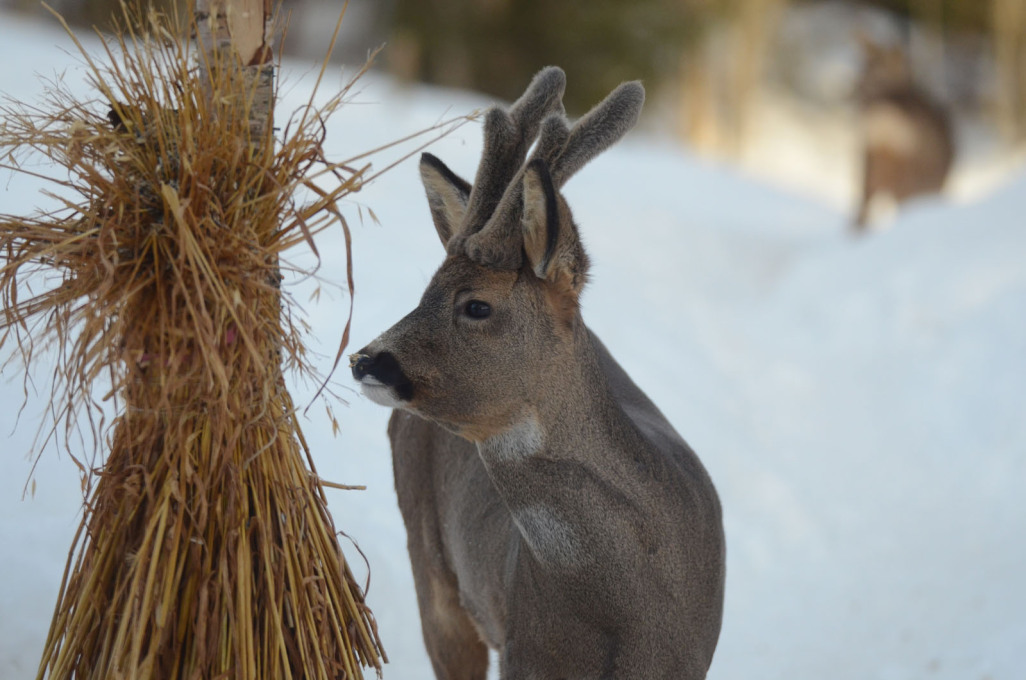The architect and editor Einar Bjarki Malmquist describes the inspiring brief for an extension to a house that he designed for a biologist and his family – as well as some bats, oh and some bees (not to mention the rabbits, toads, voles, moose and deer around it). A veritable Animal House in action as a coda to our current issue.
A few years ago I made a small extension to an old log house in Nittedal, outside Oslo in Norway. The extension was designed not only to transform the living spaces for the family: it also made rooms for bats.
The house’s owner, biologist Jeroen van der Kooij, runs the Norwegian Bat Care Centre for homeless and wounded bats. His family has a large and beautiful garden with many small places for rabbits, birds – and bats of course: in the trees, in a small shelter behind the garage – basically all over the place, connecting with the wildlife coming from the forest at the eastern edge of the garden.
From the long horizontal window in the new extension, this “batman” and his family can watch the birds and the bats flying around among the trees (binoculars are always at the ready). And if you walk in the garden and look up under the eaves of the house you might notice small spaces for birds, while in the trees, there are several small boxes – some for birds, some for bats. And watch your step, as there are rabbits running around on the ground. If you’re lucky you might see a moose or a deer looking at you from behind a bush or a tree. A toad might be jumping into the garden at its eastern edge, heading for the pond. You have entered an extraordinary Nordic-oasis of life where the city meets the so called Marka, the forested, hilly surroundings of Oslo.
The extension to the log house includes a living room on the main floor and a workshop downstairs. But it is the exterior walls – made of massive wooden elements, 250 mm thick, with wood fibre insulation and aspen cladding – that house the biggest surprise of this project: in both the new living room on the first floor, and in the workshop below, I designed two small spaces specifically for bats. These tiny rooms within the walls have a small opening to the outside, about 20 x 50 mm, as a “front door” for the bats, with a small access corridor leading to them, providing spaces where the bats can roost or hibernate. These bat-homes are ones in which the biologist can monitor the number of bats and measure temperature changes and behaviour patterns easily, as there are small windows on the inside face of the wall, allowing views in.
The bats that have been dwelling in the bat-spaces so far have mostly been Parti-coloured Bat (Vespertilio murinus). They hibernate from October to March, during which time they do not like to be too warm nor too cold (ideally between two to three degrees Celsius to just below minus two degrees Celsius). Within the bat-spaces they can find their preferred temperature by moving up or down the wall using their tiny claws, finding their perfect bat-comfort zone. What’s clever about bats too is their energy-saving capacity. In the summer they prefer to find spots that face south or south-west in the afternoon, so as to make sure that they can warm up before stretching their wings to go flying around the garden at dusk. And as the warm air on a sunny day also warms the bat-house itself, the bats can save their energy there too: otherwise they would have to expend a considerable amount of it moving around for a while to become warm enough before flying off. It all makes for a nice, logical parallel to the habits of another mammal they’re sharing their habitat with: humans, whose living rooms and terraces face south-west as well to catch the warm rays of sun from noon to the late afternoon.
To the surprise of both architect and batman there were even more unexpected occupants of the bat-spaces. Other flying creatures turned out to rather appreciate the accommodation as well. In the summer of 2012 a swarm of bees moved into the bat room on the first floor, which faces the south-west by the living room – to the delight of the children in the house, who could watch the bees through the wall’s internal window, busily building their honeycombs and working on their honey production. Given that many species of bees, which play a major role in food production, are endangered, it was great that they can benefit from these generic facilities too.
What appeared at first like just another new house and garden in Norway, turned out to be a shared place where the approach to everyday life and architecture allows for a unique intertwining of human and animal lives.
– Einar Bjarki Malmquist is an architect, at Malmquist Arkitektur, and editor of Arkitektur N, The Norwegian Review of Architecture.




